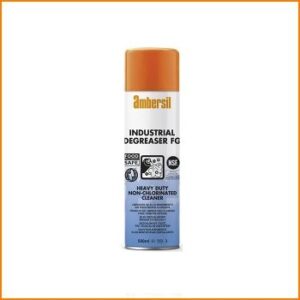Understanding Solvent and Water-Based Degreasers: A Detailed Comparison
Degreasers are essential in various industries for the removal of oils, greases, lubricants, and other contaminants from surfaces. They play a crucial role in maintaining cleanliness, safety, and efficiency in industrial processes. Two primary types of degreasers widely used are solvent-based and water-based degreasers. Each type has its own set of characteristics, advantages, and applications. In this article, we will delve into the details of solvent and water-based degreasers, comparing their compositions, properties, applications, and environmental considerations.
1. Solvent-Based Degreasers:
Solvent-based degreasers are formulated using organic solvents as their primary active ingredient. These solvents can include hydrocarbons such as mineral spirits, kerosene, petroleum distillates, and chlorinated compounds like trichloroethylene and perchloroethylene. The solvent’s ability to dissolve oils and greases makes it effective in removing tough contaminants from surfaces.
Composition:
- Organic solvents: The main active ingredient responsible for dissolving oils and greases.
- Emulsifiers: Added to facilitate the emulsification of oil and water mixtures, aiding in the removal of contaminants.
- Surfactants: Help in breaking down surface tension and improving the wetting ability of the degreaser.
Properties:
- High solvency power: Solvent-based degreasers exhibit excellent solvency, making them effective in removing stubborn contaminants.
- Fast evaporation: Solvents evaporate quickly, leaving behind clean, dry surfaces.
- Strong odor: Many solvent-based degreasers have a strong odor due to the volatile organic compounds (VOCs) present in the solvents.
Applications:
- Solvent-based degreasers are commonly used in industries such as automotive, manufacturing, aerospace, and metalworking for heavy-duty cleaning tasks.
- They are preferred for cleaning machinery parts, engines, tools, and equipment where stubborn oils and greases need to be removed quickly and efficiently.
Environmental Considerations:
- Solvent-based degreasers contain volatile organic compounds (VOCs), which contribute to air pollution and pose health risks to workers.
- Improper disposal of solvent-based degreasers can lead to soil and groundwater contamination.
- Regulatory agencies often impose restrictions on the use and disposal of solvent-based degreasers to minimize environmental impact.
Ambersil Industrial Degreaser FG 500ml
Ambersil Industrial Degreaser FG 500mlAMBERSIL INDUSTRIAL DEGREASER FG is an innovative solvent blend that is excellent for use where rapid turnaround is necessary and low flash point solvents can be used. Dissolves and removes greases, oils, lubricants, adhesives and contaminants from equipment, machinery, motors and metal parts. · NSF A8 and K1 registered (N° 140255 and 140250) for use in food industry · Cuts through dirt and grease · Fast evaporation to minimise downtime, leaves no residues · Easy “in place” cleaning with minimal odour · Non-corrosive and non-staining · Safe on most plastics, coatings and rubbers (always test prior to use) · Aerosol fitted with a 360O Spray System for all angle use, even upside down
WEICON WORKSHOP CLEANER – 5L
WEICON WORKSHOP CLEANER – 5LWeicon Workshop Cleaner is an incredibly powerful and versatile cleaning liquid used in all kinds of industries. This powerful cleaner effectively cleans and degreases all metals, plastics, rubbers, glass, ceramics and wood.
2. Water-Based Degreasers:
Water-based degreasers, as the name suggests, are formulated using water as the primary solvent instead of organic solvents. These degreasers are designed to be environmentally friendly while maintaining effective cleaning capabilities.
Composition:
- Water: Acts as the main solvent, providing a medium for other active ingredients.
- Surfactants: Assist in breaking down oils and greases, allowing them to be easily removed from surfaces.
- Alkaline or acidic agents: Added to enhance the degreasing power and adjust the pH of the solution for specific applications.
Properties:
- Environmentally friendly: Water-based degreasers have lower VOC emissions compared to solvent-based degreasers, making them more environmentally sustainable.
- Low odor: Water-based degreasers typically have a milder odor compared to solvent-based counterparts.
- Longer drying time: Since water evaporates more slowly than organic solvents, surfaces cleaned with water-based degreasers may take longer to dry.
Applications:
- Water-based degreasers are suitable for a wide range of applications, including general cleaning, maintenance, and degreasing in industries such as food processing, healthcare, and electronics.
- They are effective in removing light to moderate levels of contaminants from surfaces without causing damage or corrosion.
Environmental Considerations:
- Water-based degreasers are considered safer for the environment and human health due to their lower VOC content.
- They are biodegradable and less harmful to aquatic ecosystems compared to solvent-based degreasers.
- Proper disposal methods, such as recycling or treatment of wastewater, should still be followed to minimize environmental impact.
Conclusion:
Both solvent-based and water-based degreasers offer effective solutions for removing oils, greases, and other contaminants from surfaces. While solvent-based degreasers excel in heavy-duty cleaning tasks and fast evaporation, they pose environmental and health risks due to their high VOC content. On the other hand, water-based degreasers provide a safer and more sustainable alternative, although they may require longer drying times and may not be as effective for heavy-duty cleaning tasks. Ultimately, the choice between solvent-based and water-based degreasers depends on the specific cleaning requirements, environmental considerations, and regulatory compliance of each application.



